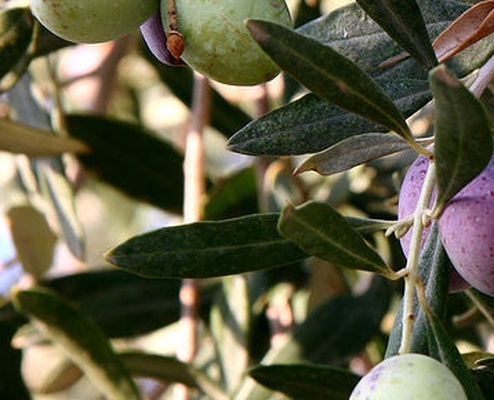Black olives are a type of olive that has been allowed to ripen fully on the tree before being harvested. They are distinguished from green olives by their dark color, which can range from deep purple to black, depending on the variety and curing process. Black olives are a staple in Mediterranean cuisine and are used widely around the world in a variety of culinary applications.
Note that "black olive" includes both tree-ripened and cured olives (which will sometimes have a deep purple color) and lye-cured canned olives, which are truly a deep black. The flavor and preparation of these two ingredients is quite different.
Olives start as green and turn black as they mature. Black olives are harvested when they have ripened on the tree, which usually occurs in the late autumn to early winter. The ripening process increases the oil content and decreases the bitterness, making the olives more palatable. The timing of the harvest and the method of curing both play significant roles in determining the flavor, texture, and color of the final product.
Raw black olives are naturally bitter and are generally not eaten without curing. The bitterness comes from a compound called oleuropein, which is removed or reduced during the curing process. Common methods of curing include:
- Brine curing: Olives are soaked in a saltwater solution for several months. This method is popular in Greece and results in a salty, tangy flavor.
- Dry curing: Olives are packed in salt and left to cure for several weeks. This method, often used in Mediterranean countries, produces wrinkled olives with a rich, concentrated flavor.
- Water curing: Olives are soaked in water, with the water being changed regularly to leach out the bitterness. This method is less common but results in a milder flavor.
- Lye curing: Olives are soaked in a lye solution to speed up the curing process. This method is often used for producing black olives on a commercial scale, particularly for canned olives in the United States.
After curing, some black olives are further processed by fermentation, or they may be treated with oxygen to darken the color and ensure uniformity.
Notable varieties of black olives include:
- Kalamata: A large, almond-shaped olive from Greece, known for its deep purple color and robust flavor.
- Mission: A variety developed in California, which is commonly used for both oil and table olives. These olives are often dry-cured or brine-cured.
- Niçoise: A small, dark olive from the Provence region of France, often used in the classic salade Niçoise.
- Gaeta: A small, wrinkled olive from Italy, often dry-cured and packed in olive oil.
